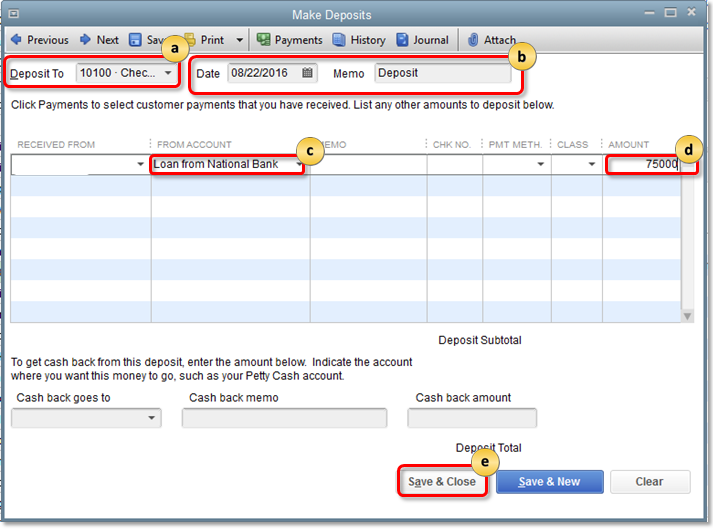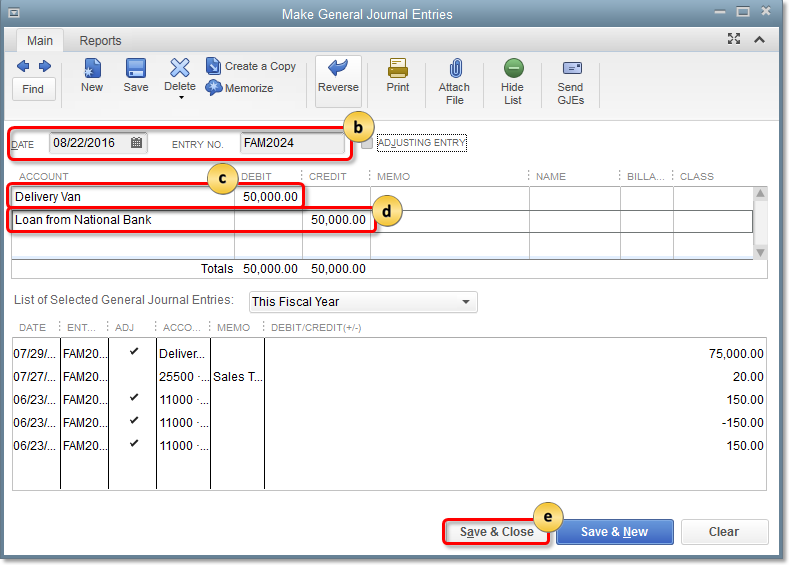Good day, @TerryR25.
Thanks for joining this conversation. Allow me to chime in and help record your payback to a shareholder in your QuickBooks Desktop (QBDT).
The process will be the same as what my colleague Sarah shared above for the Online version of QuickBooks. For QBDT, please refer to these steps.
To set up a liability account, here's how:
- In QBDT, go to the Lists menu at the top to get to the Chart of Accounts.
- Right-click anywhere, then select New.
- Select Other Account Types, then select the right account type for your loan:
-
- Other Current Liability: Use this for short-term loans payable over one year.
- Long Term Liability: Use this for long-term loans payable over a longer period.
- Select Continue.
- Enter the name and number for the account.
- Select Save & Close.
Once done, create an expense account so you can track interest payments or fees/charges. Here's how:
- Go back to the Chart of Accounts.
- Right-click anywhere, then select New.
- Select Expense, then Continue.
- Enter the account name for the interest payments or fees and charges.
- Select Save & Close.
Now that you have a liability account for the loan, here’s how to record the loan amount. Here's how:
Cash loans
- Go to the Banking menu, then select Make Deposits.
- If the Payments to Deposit window opens, select Cancel.
- In the Make Deposits window:

- In the Deposit To field, select the account to deposit the loan into.
- Check the Date and enter an optional Memo.
- In the From Account column, select the Liability account you created in Step 1.
- In the Amount column, enter the loan amount.
- Select Save & Close.
Non-cash loans
- Create an asset account.
- Go to the Lists menu, then select Chart of Accounts.
- Right-click anywhere, then select New.
- Select the account type for your non-cash loan:
- Fixed Asset: Use this for items that have useful value for more than a year (vehicles, buildings, and so on)
- Other Current Asset: Use this for items with value that can be converted to cash (like prepaid expenses)
- Other Asset: Use this for items that are neither Fixed Assets nor Other Current Assets.
- Select Continue.
- Enter the name and number for the account.
- When you’re done, select Save & Close.
- Enter a journal entry.

- Go to the Company menu, then select Make General Journal Entries.
- Enter the Date and journal Entry No.
- Select the first line and debit the loan asset account.
- Select the second line and credit the liability account.
- Select Save & Close.
Finally, here's how to record the payment:
- Go to the Banking menu, then select Write Checks.
- Select the Bank Account you want to use to pay the loan.
- Verify the Check NO. and Date.
- In the Pay to the Order of field, select the name of the bank.
- In the Expenses tab:
- On the first line, select the liability account you created in Step 1. Then enter the payment for the principal amount.
- On the second line, select the interest expense account. Then enter the payment for the loan interest.
- (Optional) Memorize the check if you want QuickBooks to automatically enter the payment at regular intervals.
- Select Memorize.
- Fill out the fields as needed.
- Select OK.
- When you’re done, select Save & Close.
You can also check out this article for detailed information about the process: Manually track loans in QuickBooks Desktop.
If you want to keep track of your loans and be reminded about upcoming payments, you can track and manage your loans with the QuickBooks Loan Manager.
I also recommend consulting your accountant for further guidance. They'll be able to provide you with the best accounting advice for your unique business. If you don't have an accountant, you can check out this link to find one near you.
For tips and other resources, check out our website for future reference: Self-help articles.
Please leave a comment in this thread if you have additional questions about recording paybacks or anything else in QBDT. I'll be more than happy to help. Have a great day.

